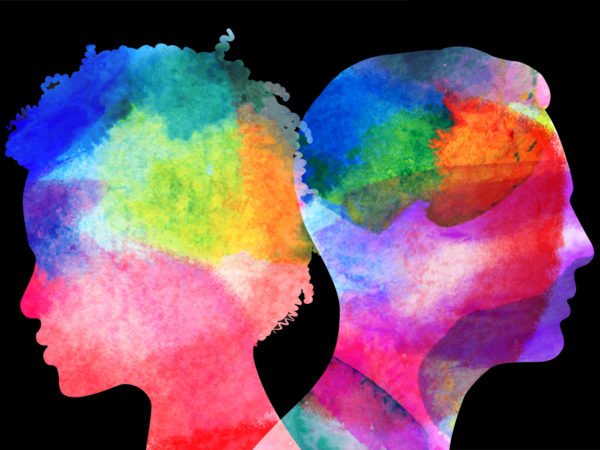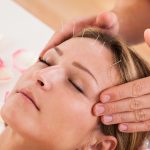Dr. Weil’s Guide To Headaches: Their Causes, Prevention And Treatment

The good news is that most headaches can be overcome once you know the cause and are able to get proper treatment. Learn more from Dr. Weil’s Guide To Headaches.
Almost everyone has a headache now and then, but many people are plagued with chronic headaches that can interfere with everyday life. The good news is that most headaches can be overcome once you know the cause and are able to get proper treatment.
Here’s a preview that can help you identify what kind of headache you have. Click on the title of each type of headache to find more in-depth information on causes, treatment and prevention.
Dr. Weil’s Headache Guide:
Allergy Headaches
Research has shown that migraine headaches are more common among people with hay fever (allergic rhinitis) than those without this condition, Treatment to prevent allergic reactions can help prevent associated headaches.
Caffeine Withdrawal Headaches
These throbbing headaches come on quickly if you cut back on or eliminate your morning coffee and other sources of caffeine.
Cluster Headaches
Some of the most severe headaches, these are characterized by throbbing pain usually concentrated around an eye and temple. They can last from 15 minutes to three hours, and during a “cluster” of four to six weeks, the headaches tend to occur an average of twice a day. Check out the latest in prevention.
Depression And Headaches
Depression, anxiety and migraine headaches often co-exist, although experts aren’t sure whether the headaches lead to depression and anxiety or vice versa.
Exertional Headaches
These rare headaches usually come on during or right after exercise and are most likely to develop when you’re working out in hot, humid weather or at high altitude. While a personal or family history of migraine increases the risk for these headaches, you can learn to prevent them.
Eyestrain Headache
Eyestrain occurs from improper focusing of the eyes due to nearsightedness, farsightedness or astigmatism, poor eye alignment, or improper eyeglasses. Eyestrain can lead to headaches, but experts view it as overrated as a cause. Eyestrain resulting from computer use may be a more significant factor.
Hangover Headaches
These headaches typically begin five to 12 hours after consuming too much alcohol and can last as long as 72 hours. There’s no scientific proof that any of the many pills and patches marketed as hangover cures actually work, but there are strategies to help prevent these headaches.
Hunger Headaches
Skipping meals, fasting, following a strict diet and even eating too much sugar can lead to hunger headaches or trigger headaches in people who suffer from migraines. There are effective methods to help you avoid them.
Hypertension Headaches
Very high blood pressure can trigger severe headaches as well as blurred vision, chest pain, nausea and vomiting, shortness of breath and seizures. This is a health emergency requiring immediate hospital treatment. Beyond that, a clear link between high blood pressure and headaches hasn’t been established, although medication for high blood pressure can cause headaches.
Medication Overuse Headaches
Also called “rebound headaches” and “drug-induced headaches,” these stem from taking too much medication for migraines or other chronic headaches. Learn how to recognize these headaches and how to avoid them.
Menstrual Migraines
Migraines that occur between two days before and three days after menstruation begins during at least two consecutive menstrual cycles are considered menstrual migraines. They tend to be more severe, longer lasting and harder to treat than migraines that occur at other times of the month. Several strategies can help prevent these headaches.
Migraines Without Aura
These severe, disabling headaches affect some 37 million men, women and children in the United States. Fortunately, treatment has improved dramatically since the introduction of drugs that specifically target migraine
Migraines With Aura
About one quarter of people who have migraine experience aura, a series of visual and other sensory changes that usually precede the headache. These can range from seeing flashes of light, black dots and zig zags to tingling numbness on one side of the body or an inability to speak clearly.
Occipital Neuralgia
These relatively rare headaches stem from injury or inflammation affecting the two occipital nerves, which travel from the top of the spinal cord up through the scalp along opposite sides of the head and transmit most of the feeling in the head to the brain. Affected individuals can learn how to deal with these headaches.
Sinus Headaches
What you might think is a sinus headache is more likely to be a migraine. Headaches caused by a sinus infection are considered Find out why.
Temporomandibular Joint (TMJ) Headache
Dysfunction of the temporomandibular joint (TMJ) that holds the jaw to the skull and enables us to open and close the mouth causes these headaches. It’s estimated that at any one time approximately 35 million people in the U.S. are affected by TMJ disorders. Learn what to do if you’re one of them.
Tension Headaches
The most common type of headache. They often arise from tense or contracted neck, shoulder and scalp muscles stemming from anxiety, stress, depression or a head injury. Good news – they’re preventable.














